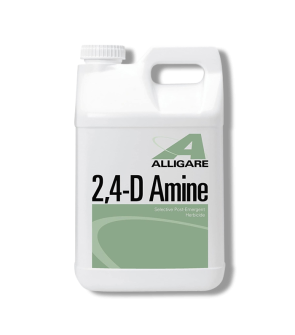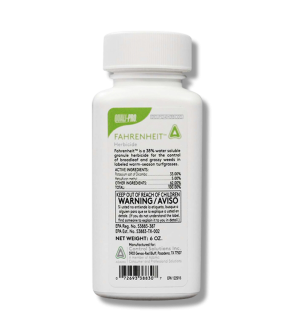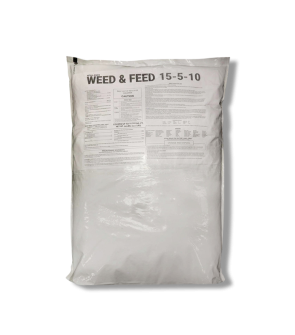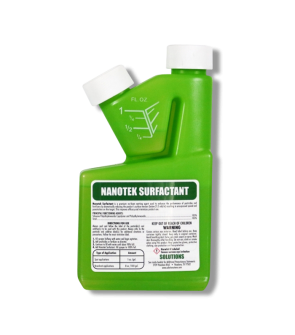Field Bindweed Control
Most Effective Products
Field Bindweed Control: How to Get Rid of Field Bindweed
This page is a general field bindweed control guide. Using the products and methods suggested in this DIY article will help you get control of field bindweed. Follow this DIY guide and use the recommended products and we guarantee 100% control of field bindweed.
Field bindweed is a perennial broadleaf weed that creeps along the surface of turfs, pastures, and cultivated fields with its extensive root system. With its purplish to white flowers, field bindweed is often mistaken for desirable plants such as morning glory. However, this can be farther from the truth as this weed aggressively twists around other plants to obtain space and nutrients for its growth leading to death of desirable foliage.
This spring occurring weed belongs to the plant family Convolvulaceae, and falls under the name small-flowered morning glory, Creeping-jenny, and Convolvulus arvensis. Hence the name Creeping-jenny, field bindweed is known for its ability to quickly creep or roll around plants to form dense tangled mats. These deep fibrous root system helps this weed to survive in drought, full sunlight or shade conditions along the western portion of the United States. This hardiness can further be seen with its seed life as it can survive for up to 50 years in soil until conditions are ideal for growth.
Field bindweed is a tough perennial weed that quickly establishes itself with its creeping root system in properties due to these factors you will want to eliminate this plant as soon as possible. The directions and products suggested in this DIY guide will help you to properly and completely remove field bindweed in an appropriate time frame.
Identification
Before proceeding with a treatment program, you will need to determine if the weed on your lawn is field bindweed. Misidentification can lead you to using the wrong treatment method, which can be a waste of time and money. Refer to these following characteristics to help you identify field bindweed.

- Leaves are hairless with a narrow arrow shaped and they reach up to a height of 1 to 2 inches. Not to be confused with morning glory, which has heart-shaped leaves. Field bindweed leaves will vary from light to moderate dark colored green.
- Mid-summer, trumpet shaped flowers that range from white to pink in color will appear on the field bindweed vines. In contrast to morning glory, which has flowers that range from blue, white, and purple in color and contains a thicker stem that sometimes is hairy. Flowers of field bindweed measure 1 inch long in length and width whereas morning glory flowers will be larger than these measurements.
- Stems of field bindweed are smooth and slightly hairy. Its shape will twist counter-clockwise, branched at the base, and reach heights up to 1 to 6 feet long.
- Field bindweed appears in the spring, then flowers throughout the summer usually in the middle of the season, and perishes when the weather becomes cool.
- Contains a fibrous root system that is white in coloration and reaches 20 feet in one growing season. Field bindweed can reproduce by seed or roots with its seeds remaining in the soil for up to 50 years.
Use the description and image above to help you identify field bindweed on your lawn. If you are unsure whether the plant is field bindweed, then contact us with a photo of the weed and we will properly identify the foliage and suggest the appropriate herbicide recommendations.
Inspection
After you have confirmed that the infestation on your property is field bindweed, you can proceed with inspection. During this phase, you will locate areas where field bindweed is thriving and observe the conditions helping that are allowing it to survive. This information will help you in knowing where to focus your herbicide applications.

Where to Inspect
Field bindweed grows best in terrain containing high amounts of moisture such as cultivated fields, gardens, turf, lawns, crops, ravines, pastures, waste places, and ditches. Due to its deep extensive root system, field bindweed has the ability to adapt to different soils types and elevation heights as long as its below 5,000 sq. ft.
What to Look For
Field bindweed is perennial vineish weed that can easily be found in your property, flower beds, driveways, and other areas exposed to full sun and partial shade. Stems of this weed may trail across the ground or climb up on straight and upright plant stems such as shrubs or ornamental flowers. If there are no longer any desirable plants in the area then field bindweed may contort into a twisted and dense formation of vines.
Treatment
When beginning any weed control application, you will need to wear the appropriate personal protective equipment (PPE) that protect your face, mouth, eyes, hands, feet, and skin.
Field bindweed is very persistent and hard to control without the aid of herbicide products labeled to treat this weed. Once established, field bindweed will require numerous years of herbicide application and cultural management practices. Timing of application is an important factor when controlling this weed we recommend beginning at the start of the spring as this is when field bindweed is young.
Post-emergent herbicides with a systemic action and containing either trifluralin, oryzalin, pendimethalin, glyphosphate, or 2,4-D will help to kill field bindweed.
We recommend using 2,4-D Amine Selective Post-Emergent Herbicide as this product contains 2,4-D 46.8% which helps to eliminate field bindweed to the roots in most cool-seasoned turf. To get rid of field bindweed in warm-seasoned turf we suggest using a selective post-emergent herbicide like Fahrenheit Herbicide.
Step 1: Measure and Mix Post-Emergent Herbicide

Determine how much herbicide material to use by measuring the square footage of the treatment area. To find this, measure the length and width of the treatment area in feet and multiply them together (length X width = square footage). For acreage, take the square footage and divide it by one acre (square footage / 43,560 = acre).
To control field bindweed in cool-seasoned turf as a spot treatment, apply 3.16 pints of 2,4-D Amine Selective Post-Emergent Herbicide per 1 acre. For smaller applications, this breaks down to 1.1 fl. oz. of product applied over 1,000 sq. ft.
To get rid of field bindweed in warm-seasoned turf as a spot treatment, mix 0.2 oz. of Fahrenheit Herbicide per 1 gallon of water per 1,000 sq. ft. Keep in mind that when making applications over St. Augustinegrass, Bermudagrass, or Zoysiagrass, temporary stunting or chlorosis may occur.
For either of these products, we recommend you mix and apply your herbicide with a handheld pump sprayer and use a surfactant like Nanotek to enhance the effectiveness of your treatment. Nanotek is a non-herbicide product designed to improve the adhesion and penetration of pesticides onto treated surfaces. When using Nanotek, just add 1 fluid ounce per 1 gallon of solution.
Step 2: Spray Post-Emergent Herbicide to Field Bindweed

Change the nozzle setting on your sprayer to a fan-spray to produce a fine low pressure mist that can easily be controlled. Spray the top and bottom of field bindweed leaves until wet, but not to the point of run-off.
When applied properly, affected weeds will yellow and begin to die. Due to the plant’s root system, follow-up applications will likely be necessary. Reapplication intervals with 2, 4-D Amine range from 21 to 30 days. Reapplication intervals with Fahrenheit Herbicide range from 4 to 6 weeks.
Applications are most effective in spring when the plant is young and growing.
Prevention
After you have treated field bindweed from your property, you will want to ensure this weed does not return. Field bindweed can be more quickly controlled when proper cultural practices are used when the weed is still young and in combination with an approved herbicide. Implement the following preventative measures to keep this deep-rooted weed from reestablishing.

- Lightly water the soil surrounding the field bindweed seedling to easily pull the weed by a gloved hand or garden hoe. Mature plants will be more difficult to remove as their root systems are quite extensive. Till at a depth of least 4 inches to remove young field bindweed roots.
- Mow your turf when it has reached a height of 3 inches to generate thick turf growth which could suffocate field bindweed. Once cut, this weed will regenerate new growth within 3 weeks. To avoid scalping your lawn, you will want to spot treat with a weed whacker when growth has returned.
- Fertilize your turf with an approved fertilizer to increase the thickness of your grass. A lawns density and overgrowth will help to produce shadows which can deter field bindweed growth activity as it is dependent on the sun for growth. Consider applying a fertilizer like Solutions 15-5-10 Weed & Feed with Trimec. This product is a slow-release fertilizer that will provide lawns with essential nutrients and fight against weed development. With a push spreader, apply 3.2 to 4 pounds of Solutions 15-5-10 Weed & Feed with Trimec per 1,000 square feet.
- Field bindweed is dependent on sites containing moderate levels of moisture so it would be best to adjust your irrigation schedule to once a week with an inch of water during the early morning. This will allow enough time for your terrain to soak in the moisture without causing excessive wetness or fungal issues.
- Rotate crops and plants each season to disturb the soil and any potential seeds residing in the turf. Seeds can last up to 50 years in soil when conditions are not ideal for growth.
Key Takeaways
What is Field Bindweed?
- Field Bindweed is an invasive perennial weed known to create thick spiral mats on landscapes and thrives in areas that have consistent moisture and sunlight.
How to Get Rid of Field Bindweed
- Our recommendation for removing field bindweed is to use a post-emergent herbicide such as 2,4-D Amine Selective Post-Emergent Herbicide or Fahrenheit Herbicide.
Preventing Field Bindweed Reinfestation
-
Regular treatments with a post-emergent herbicide like 2,4-D Amine Selective Post-Emergent Herbicide or Fahrenheit Herbicide and cultural practices such as mowing, fertilization, and deeply watering once a week with an inch of irrigation will help to prevent future reinfestations. Pre-emergent products will prove to be ineffective against field bindweed as these products will not travel far enough into the soil to eliminate this weeds roots, which travels as far as 20 feet or more deep. To effectively prevent and control field bindweed, you will need to use a post-emergent product that will travel through the plants stems and roots to kill this weed.















































































































































































































































































































































































































































































































































